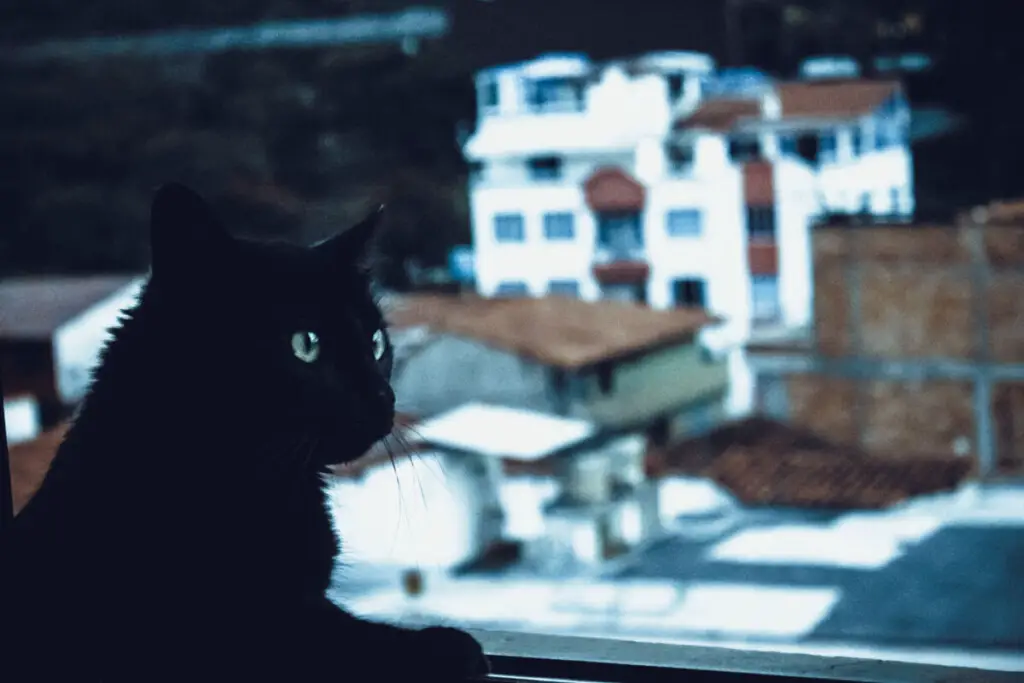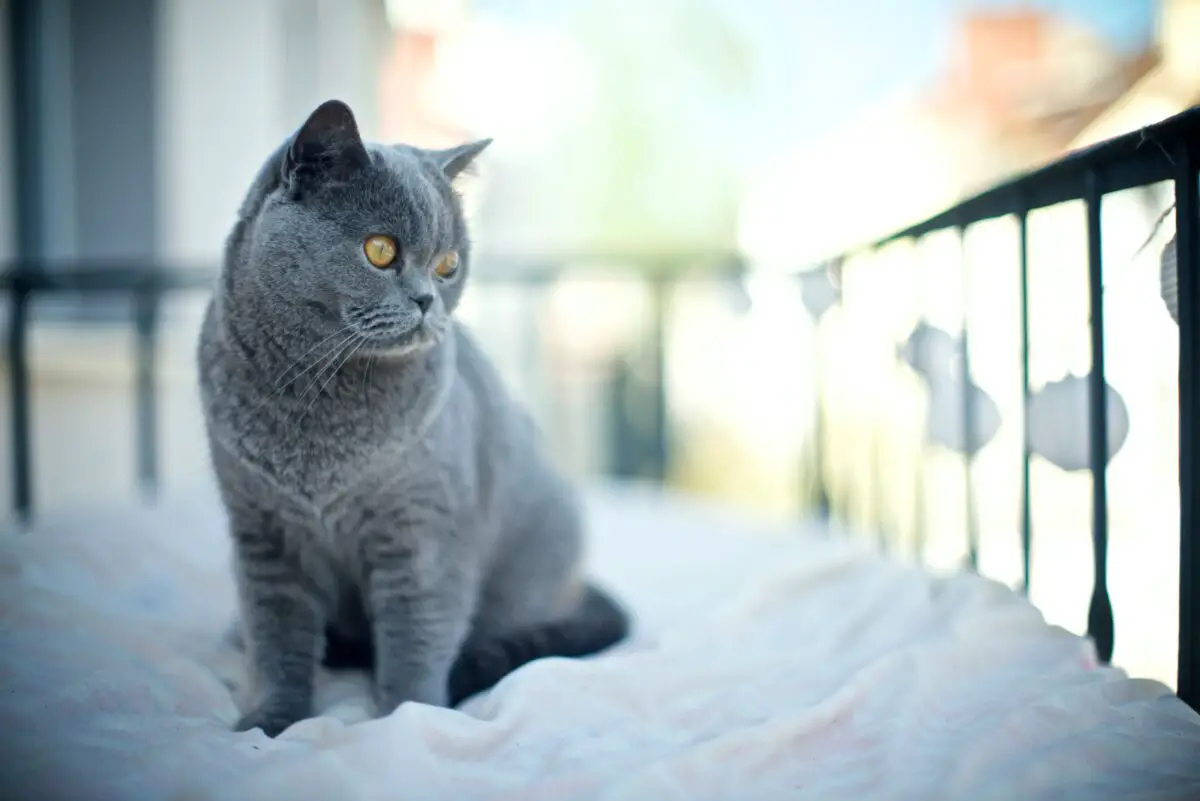Most cats like to climb and rest on high structures as they observe everything down below. When they go out, you would likely find them hiding in the trees. Therefore, it’s no surprise that balconies are particularly attractive to cats despite the potential safety risks.
A balcony may not be safe for cats since they can jump off and fall to the ground. There may be other potential dangers on the balcony like toxic plants, as well as extreme weather conditions that can cause health problems.
Here is all the information you need to learn about the specific risks of a balcony and how to effectively deal with those risks.
Balcony Dangers for Cats
The most visible danger on balconies is the risk of your cat falling to the ground.
Cats are more likely than dogs to fall from balconies. Although both dogs and cats may squeeze through the railings, cats have slender bodies making it easier for them. Besides, cats are more likely to jump onto and over the railing.
A cat falling can lead to such injuries as:
- facial injuries (split palates, trauma to nose and teeth, and broken jaws)
- broken bones
- damage to internal organs
- skin abrasions
- soft-tissue sprains
You also don’t want to lose your cat if she runs away after falling. Out there, the cat may be harmed or eat toxic foods.
The balcony also poses other dangers like burns from heated grills.
Such burns may occur if you store your grill on the balcony, and the cat jumps on it while it’s still hot. It would also be unwise to set up a BBQ with a cat around.
If your balcony has potted plants, they may be toxic to cats. Simply chewing on those plants could make the cat sick.
Since balconies have no barrier from the outside, insects like bees and wasps can harm your cat. Extreme heat or cold would be a problem too. Or the cat may simply get her head or limb caught in the railing.
Will Cats Land Safely if They Fall From a Balcony?
Since cats seem quite confident walking on high platforms, many people assume they won’t be harmed if they fall. That belief is further reinforced by the fact that cats tend to land on their feet.
However, just because cats have an innate reflex to land on their feet doesn’t mean they can’t get injured when falling from a balcony. It’s actually quite common for cats to get injured, which has led to the term high rise syndrome.
One report analyzed instances of 119 cats that had fallen from high rises. Although the report found that 97% of the cats survived, many of them were seriously injured. 46% even had fractured limbs.

Which Balcony Height Is Safe for Cats?
Now you know that cats can get injured from a fall. But you’re probably wondering whether a low height is less risky than a higher level.
Well, that depends on multiple factors.
Cases of cats falling from the 32nd story and surviving have been documented. However, that doesn’t mean that they weren’t injured.
A 1987 study published in the Journal of The American Veterinary Medical Association provides some useful insights on this issue. The study examined 132 cats that fell from different heights and survived.
The study produced some interesting findings:
- a third of the cats would have died without emergency veterinary treatment
- the cats had worse injuries in falls from lower stories than higher ones
According to the researchers, the fewer injuries in falls from higher stories could be due to the cats having reached terminal velocity after a seven-story fall. At that point, the cats stop accelerating downwards, relax, and distribute their weight better on impact.
Therefore, you might assume that a low balcony is safe for your cat, yet it isn’t.
Besides, there could be objects in the way as the cat falls, like a clothesline, which can injure the cat.
How Can You Make Your Balcony Safe?
Having an understanding of the potential risks on your balcony can help you prevent any harm to your precious cat.
You can apply several safety strategies, and it’s better to apply multiple strategies at once to further reduce the level of risk.
One way to keep your cats safe on the balcony is to set up screened-in enclosures. You can use catio (also called “cat patio”), which is an outdoor enclosure for your cat. Make sure it’s completely sealed with no gaps or tears.
The enclosures can be simple tunnels or multi-level cat complexes.
Another option is installing balcony cat-nets.
The net is installed from rooftop to floor, so your cat doesn’t jump over it or crawl underneath. You may either go for the DIY option or commercial installation. Both are specially designed for cat safety by being chew resistant, so your cat doesn’t tear through, and UV resistant, so the sun doesn’t wear it out.
You may have to get a transparent option to comply with building regulations.
When you enclose the balcony, make sure to also have an approved cat door to the house. You certainly don’t want your cat to get stuck out on the balcony. And remember to place water, food, and shelter on the balcony.
To ensure your cat remains safe, remove potential hazards on the balcony, like grills. Your cat may jump on it, and it may fall on and injure your precious pet.
Also, check that the plants on the balcony aren’t toxic.
Even if you have the floor-to-rooftop net, remove furniture that your cat can climb on to try to get over the railing. You never know if the cat may find a hidden escape route.
Despite all the precautions and safety measures, you should always try to supervise your cat on the balcony. This way, you can take quick action in case something unexpected happens.
What to Do in Case Your Cat Falls From the Balcony
As an added safety measure, have your cat vaccinated and even microchipped before letting her on the balcony. In the event that she falls off the balcony and gets lost, you’ll be able to track and find her.
In the unfortunate event that your cat falls off the balcony, even if it’s at a low height, take her to your veterinarian immediately. The cat may seem fine externally, yet having internal injuries like:
- head injuries
- heart and lung bruising
- ruptured bladder
- hips, jaw, pelvis, and limb fractures
Immediate action will ensure higher chances of survival.
Some physical signs can indicate to you that your cat has sustained some form of internal injury. For instance, the cat loses consciousness. A seemingly short fall may cause head trauma or lead to broken bones on the neck or back.
Another physical sign of internal injuries is shock. The cat may have:
- a faint heartbeat
- pale gums
- trouble breathing
In case your cat’s fall causes a broken back, she will likely experience paralysis and difficulty breathing. You shouldn’t move the cat, but instead, call the emergency vet to get instructions on how to handle the situation.
You’ll typically need to create a stiff backboard to help you transport the cat to the vet’s office. This prevents further injuries on the cat’s back and neck.
If your cat experiences head trauma, you’ll typically see these signs:
- seizures
- unusual eye movement
- bleeding from the ears
- abnormal behavior
For an unconscious cat that doesn’t have a heartbeat, you may need to perform CPR.

